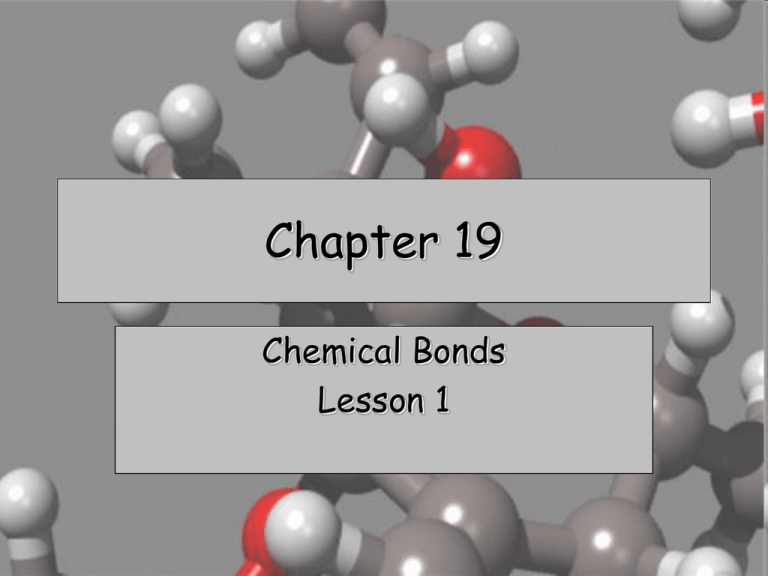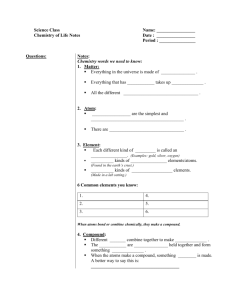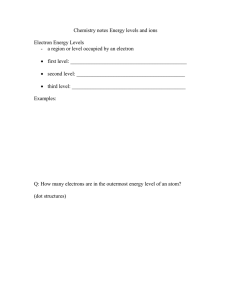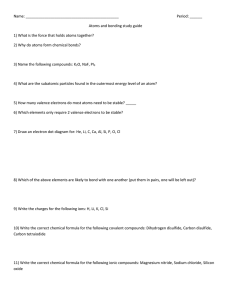19-1 notes
advertisement

Chapter 19 Chemical Bonds Lesson 1 Chemical Bond • Strong attractive force between atoms or ions in a molecule or compound. • Formed by: – transferring e- (losing or gaining) – sharing e- Properties • Compounds formed – Properties aren’t anything like those of the individual elements. • Sodium chloride – a compound made from the elements sodium and chlorine. Chemical Formulas • chemical formula – elements that make up a compound and the exact number of atoms of each element in a unit of the compound • H2O – contains the symbols H for the element hydrogen and O for the element oxygen. Formulas • Subscript – means “written below” – tells how many atoms of that element are in a unit of the compound. – no subscript the unit contains only one atom of that element Atomic Stability • electric forces – oppositely charged electrons and protons hold atoms and molecules together – the forces that cause compounds to form. • noble gases – unusually stable. – Compounds rarely form – they are almost always less stable than the original atoms. Stability • Octet Rule – most atoms form bonds in order to have valence e- (This is important) – full outer energy level – like the Noble Gases! Ne • Stability is the driving force behind bond formation! 8 The Unique Noble Gases • Electron dot diagrams – show only the electrons in the outer energy level of an atom. – Notice that eight dots surround Kr, Ne, Xe, Ar, and Rn, and two dots surround He Energy Levels and Other Elements • Hydrogen – contains one electron in its lone energy level. – has a single dot next to its symbol. – outer energy level is not full. • It is more stable when it is part of a compound. Energy Levels and Other Elements • Helium – outer energy level contains two electrons. – already has a full outer energy level by itself and is chemically stable. – rarely forms compounds but, by itself, the element is a commonly used gas. Energy Levels and Other Elements • Groups 13 through 17, – Each falls short of having a stable energy level. Energy Levels and Other Elements • Each group contains too few electrons for a stable level of eight electrons. Outer Levels —Getting Their Fill • How does hydrogen, or any other element, trying to become stable, gain or lose its outer electrons? – combining with other atoms that also have partially complete outer energy levels. – As a result, each achieves stability. Stability • Transferring e- • Sharing e- Outer Levels —Getting Their Fill • electron dot diagram – chlorine now has a stable outer energy level. – Sodium had only one electron in its outer energy level – lost to combine with chlorine in sodium chloride. Stability Is Reached • Look back to the next, outermost energy level of sodium. Stability Is Reached • atoms – gain, lose, or share electron – an attraction forms between the atoms, pulling them together to form a compound. • chemical bond – is the force that holds atoms together in a compound. Lesson Check • How many hydrogen atoms are present in one molecule of ammonium acetate, NH4C2H3O 2 7 • An ion is a positively or negatively charged atom; an ionic bond occurs when oppositely charged ions attract each other and an equal exchange of electrons takes place.





